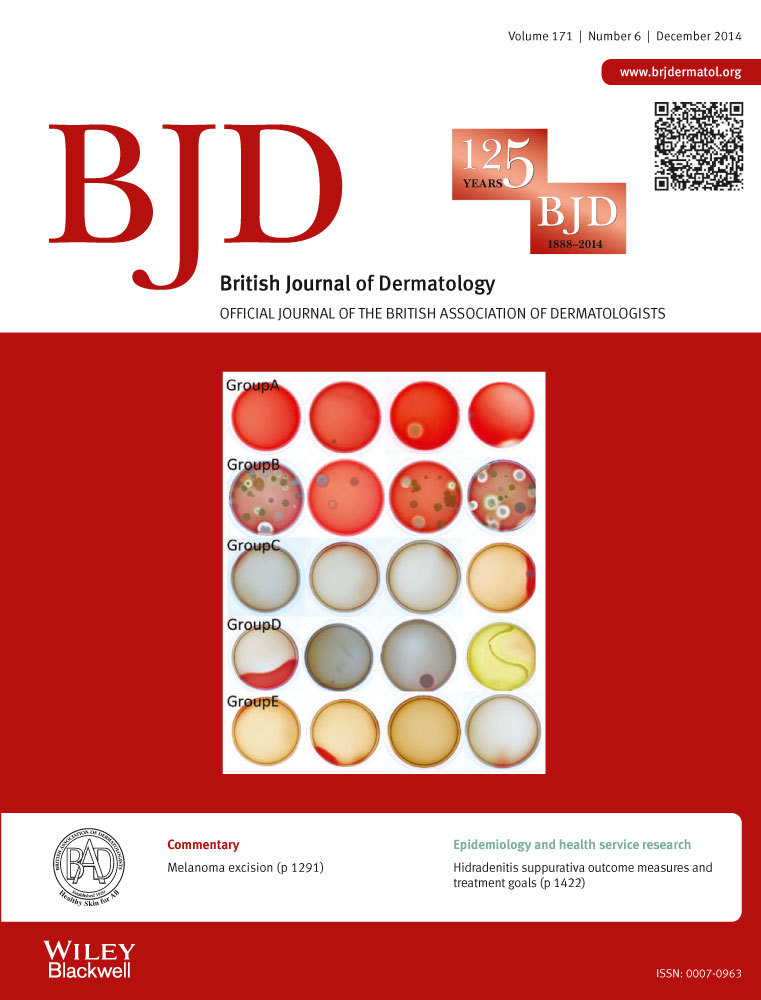Filaggrin loss-of-function mutations and incident cancer: a population-based study
Summary
Background
Loss-of-function mutations in the filaggrin gene (FLG) could have opposing effects on cancer risk, as mutations are associated with both 10% higher serum vitamin D levels, which may protect against cancer, and with impaired skin barrier function, which may lead to higher cancer susceptibility.
Objectives
To investigate the association of the FLG genotype and cancer types in four population-based cohorts.
Methods
A total of 13 376 individuals were genotyped for FLG mutations. Information on cancer was obtained from the Danish Cancer Registry. Persons with a history of cancer at baseline were excluded from prospective analyses.
Results
There were 1339 incident cancers (median follow-up 11·4 years). The hazard ratios (HRs) and 95% confidence intervals (CIs) for FLG mutation carriers vs. wild types were: for any cancer (HR 0·95, 95% CI 0·78–1·16), any cancer excluding nonmelanoma skin cancer (NMSC) (HR 1·05, 95% CI 0·84–1·31), head and neck cancer (HR 1·72, 95% CI 0·71–4·15), colorectal cancer (HR 0·82, 95% CI 0·44–1·52), bronchus and lung cancer (HR 1·34, 95% CI 0·77–2·33), breast cancer (HR 0·58, 95% CI 0·30–1·14), uterine cancer (HR 0·42, 95% CI 0·06–3·10), prostate cancer (HR 1·09, 95% CI 0·61–1·94), urinary cancer (HR 1·30, 95% CI 0·51–3·29), malignant melanoma (HR 1·03, 95% CI 0·41–2·58) and NMSC (HR 0·70, 95% CI 0·47–1·05). Among participants aged over 60 years at baseline, we found statistically significant lower risks of all cancers and NMSC among FLG mutation carriers.
Conclusions
The only significant associations between FLG loss-of-function mutations and cancer were in subgroup analyses.




